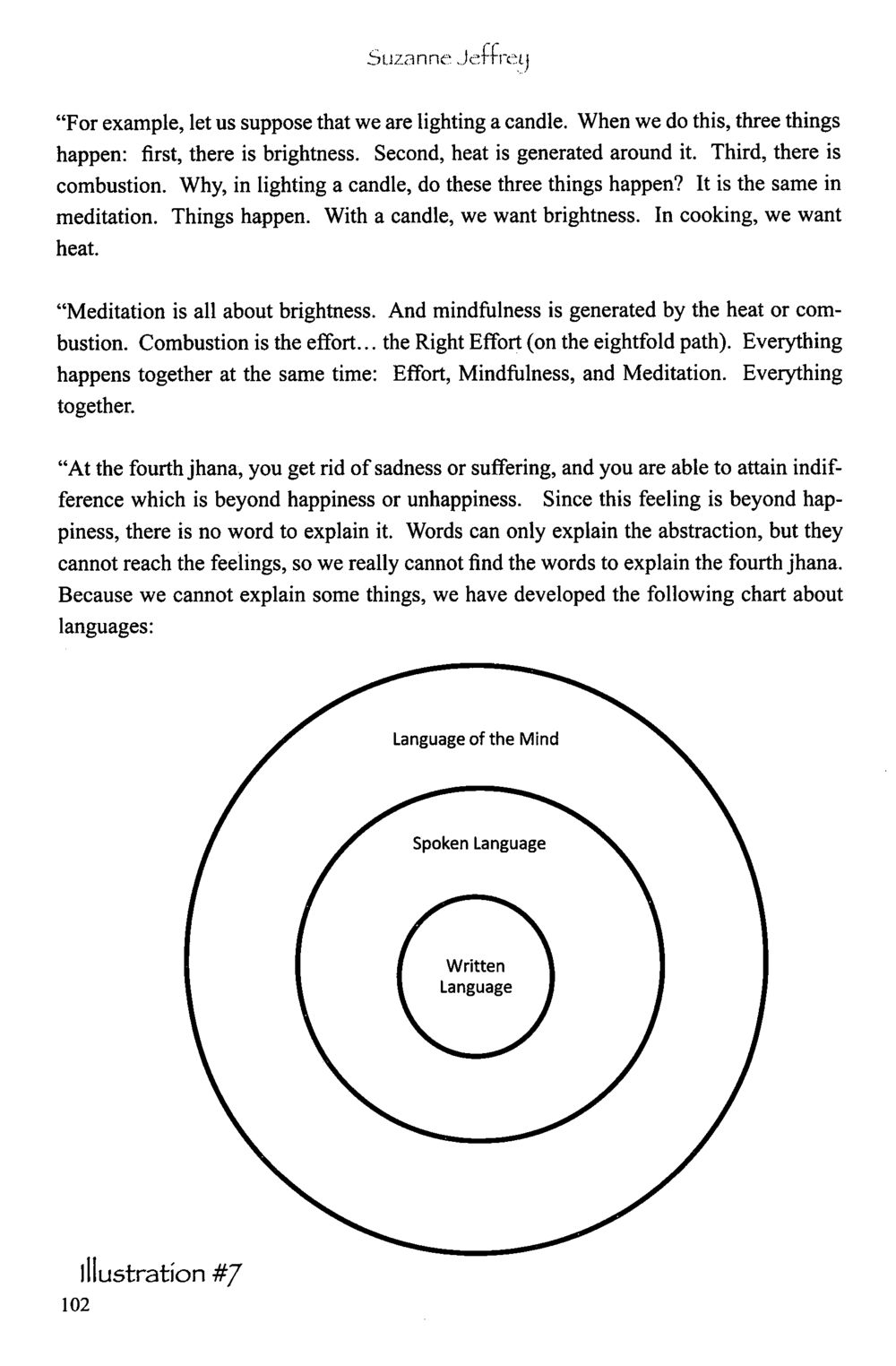The Essence of Meditation and the Four Jhanas : หน้า 103/164
The Meeting with a Dhamma Master : หน้า 103/164 Explore the relationship between meditation, mindfulness, and the attainment of the fourth jhana. Discover the significance of effort and the limitations of language in conveying deep experiences.
4 ครั้ง

สรุปเนื้อหา
In meditation, similar to lighting a candle, three phenomena occur: brightness, heat (effort), and combustion (mindfulness). The fourth jhana transcends happiness and unhappiness, leading to a profound state of indifference that cannot be fully articulated. This illustrates the limitations of language in conveying deep emotional experiences. dmc.tv
หัวข้อประเด็น
-Meditation Concepts
-Role of Mindfulness
-Understanding the Jhanas
-Limitations of Language
-Spiritual Practices
ข้อความต้นฉบับในหน้า
Suzanne Jeffrey
"For example, let us suppose that we are lighting a candle. When we do this, three things happen: first, there is brightness. Second, heat is generated around it. Third, there is combustion. Why, in lighting a candle, do these three things happen? It is the same in meditation. Things happen. With a candle, we want brightness. In cooking, we want heat.
"Meditation is all about brightness. And mindfulness is generated by the heat or combustion. Combustion is the effort… the Right Effort (on the eightfold path). Everything happens together at the same time: Effort, Mindfulness, and Meditation. Everything together.
"At the fourth jhana, you get rid of sadness or suffering, and you are able to attain indifference which is beyond happiness or unhappiness. Since this feeling is beyond happiness, there is no word to explain it. Words can only explain the abstraction, but they cannot reach the feelings, so we really cannot find the words to explain the fourth jhana. Because we cannot explain some things, we have developed the following chart about languages:
(Chart with three concentric circles labeled: Language of the Mind, Spoken Language, Written Language)
Illustration #7
102
หน้าหนังสือทั้งหมด

1

2

3

4

5

6

7

8

9

10

11

12

13

14

15

16

17

18

19

20

21

22

23

24

25

26

27

28

29

30

31

32

33

34

35

36

37

38

39

40

41

42

43

44

45

46

47

48

49

50

51

52

53

54

55

56

57

58

59

60

61

62

63

64

65

66

67

68

69

70

71

72

73

74

75

76

77

78

79

80

81

82

83

84

85

86

87

88

89

90

91

92

93

94

95

96

97

98

99

100

101

102

103

104

105

106

107

108

109

110

111

112

113

114

115

116

117

118

119

120

121

122

123

124

125

126

127

128

129

130

131

132

133

134

135

136

137

138

139

140

141

142

143

144

145

146

147

148

149

150

151

152

153

154

155

156

157

158

159

160

161

162

163

164
หนังสือที่เกี่ยวข้อง
Load More
